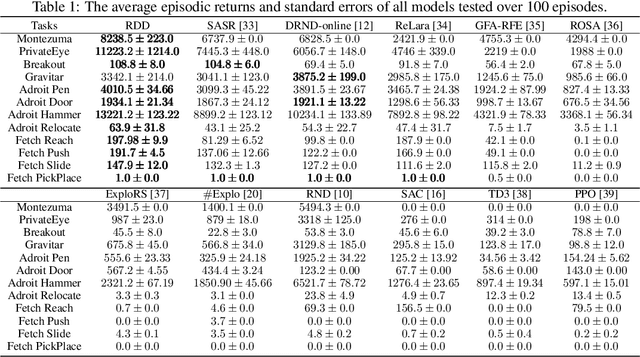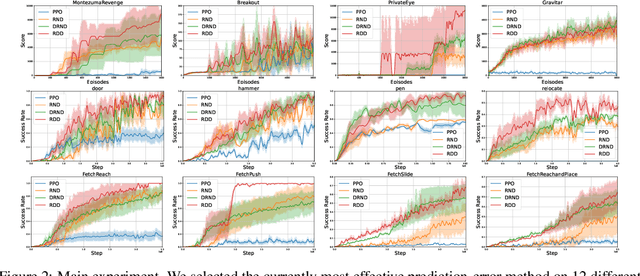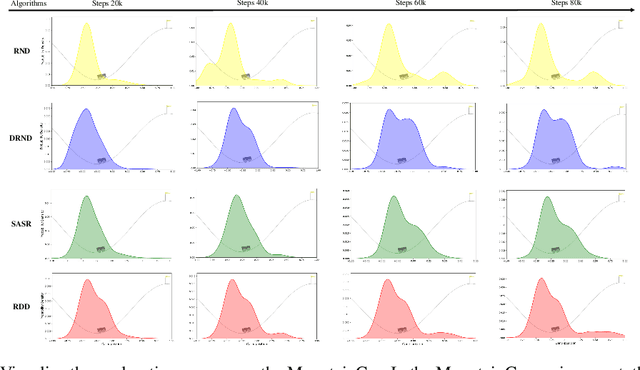Kai Yang
Sherman
Contributions to Robust and Efficient Methods for Analysis of High Dimensional Data
Sep 09, 2025Abstract:A ubiquitous feature of data of our era is their extra-large sizes and dimensions. Analyzing such high-dimensional data poses significant challenges, since the feature dimension is often much larger than the sample size. This thesis introduces robust and computationally efficient methods to address several common challenges associated with high-dimensional data. In my first manuscript, I propose a coherent approach to variable screening that accommodates nonlinear associations. I develop a novel variable screening method that transcends traditional linear assumptions by leveraging mutual information, with an intended application in neuroimaging data. This approach allows for accurate identification of important variables by capturing nonlinear as well as linear relationships between the outcome and covariates. Building on this foundation, I develop new optimization methods for sparse estimation using nonconvex penalties in my second manuscript. These methods address notable challenges in current statistical computing practices, facilitating computationally efficient and robust analyses of complex datasets. The proposed method can be applied to a general class of optimization problems. In my third manuscript, I contribute to robust modeling of high-dimensional correlated observations by developing a mixed-effects model based on Tsallis power-law entropy maximization and discussed the theoretical properties of such distribution. This model surpasses the constraints of conventional Gaussian models by accommodating a broader class of distributions with enhanced robustness to outliers. Additionally, I develop a proximal nonlinear conjugate gradient algorithm that accelerates convergence while maintaining numerical stability, along with rigorous statistical properties for the proposed framework.
Graph Federated Learning for Personalized Privacy Recommendation
Aug 08, 2025Abstract:Federated recommendation systems (FedRecs) have gained significant attention for providing privacy-preserving recommendation services. However, existing FedRecs assume that all users have the same requirements for privacy protection, i.e., they do not upload any data to the server. The approaches overlook the potential to enhance the recommendation service by utilizing publicly available user data. In real-world applications, users can choose to be private or public. Private users' interaction data is not shared, while public users' interaction data can be shared. Inspired by the issue, this paper proposes a novel Graph Federated Learning for Personalized Privacy Recommendation (GFed-PP) that adapts to different privacy requirements while improving recommendation performance. GFed-PP incorporates the interaction data of public users to build a user-item interaction graph, which is then used to form a user relationship graph. A lightweight graph convolutional network (GCN) is employed to learn each user's user-specific personalized item embedding. To protect user privacy, each client learns the user embedding and the scoring function locally. Additionally, GFed-PP achieves optimization of the federated recommendation framework through the initialization of item embedding on clients and the aggregation of the user relationship graph on the server. Experimental results demonstrate that GFed-PP significantly outperforms existing methods for five datasets, offering superior recommendation accuracy without compromising privacy. This framework provides a practical solution for accommodating varying privacy preferences in federated recommendation systems.
Stable Preference Optimization for LLMs: A Bilevel Approach Beyond Direct Preference Optimization
Jul 10, 2025Abstract:Direct Preference Optimization (DPO) has emerged as a popular and efficient alternative to reward modeling and reinforcement learning for aligning language models with human preferences. Despite its empirical success, the theoretical properties and intrinsic limitations of DPO remain underexplored. In this work, we first present a comprehensive analysis of DPO's dynamics from a probability evolution perspective. Our analysis reveals that DPO is highly sensitive to initialization. It also tends to misallocate probability mass, which can inadvertently shift probability toward irrelevant or undesired responses. This misallocation may unintentionally reinforce model bias, thereby compromising both the stability of model alignment and the consistency with intended preferences. Motivated by these theoretical findings, we propose a theoretically grounded bilevel optimization framework that tightly integrate supervised fine-tuning with an enhanced DPO objective a.k.a. stable preference optimization. Our approach introduces a principled regularization scheme to explicitly encourage absolute probability improvement for preferred outputs, while maintaining stable optimization dynamics. Experiments on challenging reasoning and summarization benchmarks elucidate that our method consistently improves reasoning accuracy and better aligns output distributions with intended preferences, outperforming standard DPO. Stable preference optimization provides new insights into the design of preference-based alignment objectives and opens up new avenues towards more reliable and interpretable language model alignment.
Initial Model Incorporation for Deep Learning FWI: Pretraining or Denormalization?
Jun 05, 2025Abstract:Subsurface property neural network reparameterized full waveform inversion (FWI) has emerged as an effective unsupervised learning framework, which can invert stably with an inaccurate starting model. It updates the trainable neural network parameters instead of fine-tuning on the subsurface model directly. There are primarily two ways to embed the prior knowledge of the initial model into neural networks, that is, pretraining and denormalization. Pretraining first regulates the neural networks' parameters by fitting the initial velocity model; Denormalization directly adds the outputs of the network into the initial models without pretraining. In this letter, we systematically investigate the influence of the two ways of initial model incorporation for the neural network reparameterized FWI. We demonstrate that pretraining requires inverting the model perturbation based on a constant velocity value (mean) with a two-stage implementation. It leads to a complex workflow and inconsistency of objective functions in the two-stage process, causing the network parameters to become inactive and lose plasticity. Experimental results demonstrate that denormalization can simplify workflows, accelerate convergence, and enhance inversion accuracy compared with pretraining.
Fog Intelligence for Network Anomaly Detection
May 27, 2025Abstract:Anomalies are common in network system monitoring. When manifested as network threats to be mitigated, service outages to be prevented, and security risks to be ameliorated, detecting such anomalous network behaviors becomes of great importance. However, the growing scale and complexity of the mobile communication networks, as well as the ever-increasing amount and dimensionality of the network surveillance data, make it extremely difficult to monitor a mobile network and discover abnormal network behaviors. Recent advances in machine learning allow for obtaining near-optimal solutions to complicated decision-making problems with many sources of uncertainty that cannot be accurately characterized by traditional mathematical models. However, most machine learning algorithms are centralized, which renders them inapplicable to a large-scale distributed wireless networks with tens of millions of mobile devices. In this article, we present fog intelligence, a distributed machine learning architecture that enables intelligent wireless network management. It preserves the advantage of both edge processing and centralized cloud computing. In addition, the proposed architecture is scalable, privacy-preserving, and well suited for intelligent management of a distributed wireless network.
MetaSTNet: Multimodal Meta-learning for Cellular Traffic Conformal Prediction
May 26, 2025Abstract:Network traffic prediction techniques have attracted much attention since they are valuable for network congestion control and user experience improvement. While existing prediction techniques can achieve favorable performance when there is sufficient training data, it remains a great challenge to make accurate predictions when only a small amount of training data is available. To tackle this problem, we propose a deep learning model, entitled MetaSTNet, based on a multimodal meta-learning framework. It is an end-to-end network architecture that trains the model in a simulator and transfers the meta-knowledge to a real-world environment, which can quickly adapt and obtain accurate predictions on a new task with only a small amount of real-world training data. In addition, we further employ cross conformal prediction to assess the calibrated prediction intervals. Extensive experiments have been conducted on real-world datasets to illustrate the efficiency and effectiveness of MetaSTNet.
Cellular Traffic Prediction via Byzantine-robust Asynchronous Federated Learning
May 25, 2025Abstract:Network traffic prediction plays a crucial role in intelligent network operation. Traditional prediction methods often rely on centralized training, necessitating the transfer of vast amounts of traffic data to a central server. This approach can lead to latency and privacy concerns. To address these issues, federated learning integrated with differential privacy has emerged as a solution to improve data privacy and model robustness in distributed settings. Nonetheless, existing federated learning protocols are vulnerable to Byzantine attacks, which may significantly compromise model robustness. Developing a robust and privacy-preserving prediction model in the presence of Byzantine clients remains a significant challenge. To this end, we propose an asynchronous differential federated learning framework based on distributionally robust optimization. The proposed framework utilizes multiple clients to train the prediction model collaboratively with local differential privacy. In addition, regularization techniques have been employed to further improve the Byzantine robustness of the models. We have conducted extensive experiments on three real-world datasets, and the results elucidate that our proposed distributed algorithm can achieve superior performance over existing methods.
Exploration by Random Distribution Distillation
May 16, 2025



Abstract:Exploration remains a critical challenge in online reinforcement learning, as an agent must effectively explore unknown environments to achieve high returns. Currently, the main exploration algorithms are primarily count-based methods and curiosity-based methods, with prediction-error methods being a prominent example. In this paper, we propose a novel method called \textbf{R}andom \textbf{D}istribution \textbf{D}istillation (RDD), which samples the output of a target network from a normal distribution. RDD facilitates a more extensive exploration by explicitly treating the difference between the prediction network and the target network as an intrinsic reward. Furthermore, by introducing randomness into the output of the target network for a given state and modeling it as a sample from a normal distribution, intrinsic rewards are bounded by two key components: a pseudo-count term ensuring proper exploration decay and a discrepancy term accounting for predictor convergence. We demonstrate that RDD effectively unifies both count-based and prediction-error approaches. It retains the advantages of prediction-error methods in high-dimensional spaces, while also implementing an intrinsic reward decay mode akin to the pseudo-count method. In the experimental section, RDD is compared with more advanced methods in a series of environments. Both theoretical analysis and experimental results confirm the effectiveness of our approach in improving online exploration for reinforcement learning tasks.
Argus: Federated Non-convex Bilevel Learning over 6G Space-Air-Ground Integrated Network
May 14, 2025Abstract:The space-air-ground integrated network (SAGIN) has recently emerged as a core element in the 6G networks. However, traditional centralized and synchronous optimization algorithms are unsuitable for SAGIN due to infrastructureless and time-varying environments. This paper aims to develop a novel Asynchronous algorithm a.k.a. Argus for tackling non-convex and non-smooth decentralized federated bilevel learning over SAGIN. The proposed algorithm allows networked agents (e.g. autonomous aerial vehicles) to tackle bilevel learning problems in time-varying networks asynchronously, thereby averting stragglers from impeding the overall training speed. We provide a theoretical analysis of the iteration complexity, communication complexity, and computational complexity of Argus. Its effectiveness is further demonstrated through numerical experiments.
Contextures: Representations from Contexts
May 02, 2025Abstract:Despite the empirical success of foundation models, we do not have a systematic characterization of the representations that these models learn. In this paper, we establish the contexture theory. It shows that a large class of representation learning methods can be characterized as learning from the association between the input and a context variable. Specifically, we show that many popular methods aim to approximate the top-d singular functions of the expectation operator induced by the context, in which case we say that the representation learns the contexture. We demonstrate the generality of the contexture theory by proving that representation learning within various learning paradigms -- supervised, self-supervised, and manifold learning -- can all be studied from such a perspective. We also prove that the representations that learn the contexture are optimal on those tasks that are compatible with the context. One important implication of the contexture theory is that once the model is large enough to approximate the top singular functions, further scaling up the model size yields diminishing returns. Therefore, scaling is not all we need, and further improvement requires better contexts. To this end, we study how to evaluate the usefulness of a context without knowing the downstream tasks. We propose a metric and show by experiments that it correlates well with the actual performance of the encoder on many real datasets.
 Add to Chrome
Add to Chrome Add to Firefox
Add to Firefox Add to Edge
Add to Edge